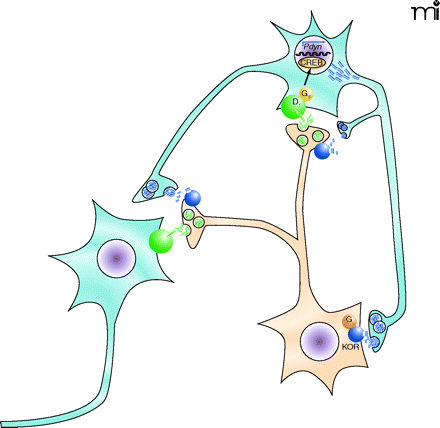
- Institution: Stanford Univ Med Ctr Lane Med Lib/Periodical Dept/Rm L109
- Sign In as Member / Individual
Salvinorin A

Potential role of the KOR–dynorphinergic signaling complex in the treatment of mood disorders. This figure depicts the mesolimbic reward pathway that has been implicated in mood disorders. Dopaminergic neurons project from the ventral tegmental area (orange) to GABAergic neurons in the nucleus accumbens (blue). Synaptic dopamine (green triangles) release can lead to activation of Gαs-coupled D1 dopamine receptors (green spheres) resulting in accumulation of cyclic AMP, and subsequent activation of the cAMP response element binding protein (CREB) that regulates transcription of dynorphin (blue rectangles), the endogenous KOR ligand (46). In this model, dynorphin activates the presynaptic KOR that modulates dopamine release in the nucleus accumbens. Stress-induced increases in CREB activity have been associated with depressive-like behaviors in animal models, similar to the behavioral effects observed with administration of KOR-selective agonists such as salvinorin A, which decrease extracellular concentrations of dopamine within the nucleus accombens. These CREB-induced depressive behaviors can be attenuated with KOR-selective antagonists (47), further implicating a role for the KOR-dynorphinergic signaling pathway in the treatment of depressive-like behaviors.


